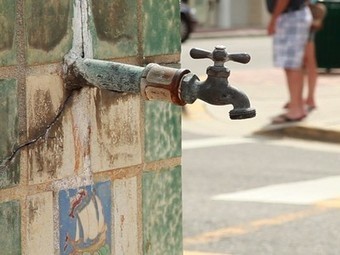 Five hundred years ago in June, the Spanish conquistador Juan Ponce de Leon started his journey back to Puerto Rico from Florida after becoming the first European to land on mainland America. After exploring the east coast of Florida, he circled the peninsula and explored the west coast,
Five hundred years ago in June, the Spanish conquistador Juan Ponce de Leon started his journey back to Puerto Rico from Florida after becoming the first European to land on mainland America. After exploring the east coast of Florida, he circled the peninsula and explored the west coast,
According to legend, the explorer set out in search of the fountain of youth, a fabled stream that would extend the life of anyone lucky enough to drink from it.
Thanks to the myth of Ponce de Leon's trip, Florida—known for its large population of retirees—is now awash in "fountains of youth." Dozens of bodies of water claim the title of the one legendary fountain, from mineral springs to deep-water wells, not to mention water from a variety of sources that is piped into various built structures.
Only one, however, is known to be radioactive. And, oddly, it might be actually extending life.
In Punta Gorda, a town on Charlotte Harbor, a blocky, green-tiled fountain abuts an empty lot near the harbor. A spigot juts out near the top to release water from the artesian well below. Each of the four sides features a picture of a ship, a tribute to Ponce de Leon.
On the side facing away from the street, a public health notice warns that the water "exceeds the maximum contaminant level for radioactivity."
The water from the well is also heavy in sulfates, which give it a distinctive smell of rotten eggs. This hasn't stopped the locals from drinking from it regularly.
"I drank out of that well every day," said Gussie Baker, a resident of Punta Gorda for all of her 78 years.
Baker used to live down the road from the Hotel Punta Gorda, whose guests would frolic in a pool filled with water from the same aquifer. Baker learned to swim in the pool and passed the fountain on her way to school.
"I love artesian water," she said. Baker doesn't live as close to the fountain anymore, but says she would drink it if she were nearby.
Punta Gordians proudly declared the existence of a rejuvenative fountain as far back as 1894. In 1926, they mounted a collection drive to pay for the stout little structure that stands to this day. At the height of its popularity, in the mid-20th century, the handle on the tap had to be replaced every six months.
Radioactive Water
The environmental movement threatened to put a stop to the locals' enthusiasm for the fountain. In 1974, Congress passed the Clean Water Act, requiring the Environmental Protection Agency to determine safe levels of a variety of contaminants, including radium. All public water sources were to be tested.
Punta Gorda's water clocked in at 9.2 picoCuries of radium-226 isotope per liter when it was tested in 1983. This exceeded the recommended radium limit, set at 5 picoCuries per liter.
As a result, in 1986, the city council mulled plugging the well, moving the fountain, and hooking it up to city water. But locals fought back.
"They've tried several times over the years to close it down, to seal it up, to move it or hook it to the city water, and the public has always defeated that," said Wilson Harper, a 71-year-old former water utilities supervisor better known as "Water Bill."
"The last 15 years it's been as quiet as a church mouse," he said.
Lindsay Harrington has worked across the street from the fountain in a real estate office and watched the comings and goings since 1997.
Visitors "usually come with lots of plastic bottles, or big plastic jugs that hold maybe five or ten gallons," he said.
"We did have an occasion where a gentleman would wash his car there, and I always thought maybe he was hoping it would lengthen the use he would get out of it," he said. "It was his own automobile fountain of youth."
Radium shows up in 3 to 4 percent of water around the country, according to a recent study by the United States Geological Survey. Many areas have no radium in their local water. Radium mostly turned up in places that had certain rock formations with particular water chemistry that created the perfect radium sink. Florida made up the third most likely area in which to find radium-laced water.
Zoltan Szabo, a co-author of the study who has worked at the United States Geological Survey for 28 years, explained that Florida's water is frequently encased in limestone, which doesn't absorb or store radium. "It's like a bad paper towel," Szabo said of the common Floridian rocks.
Artesian water supplies are especially low in oxygen, which also helps draw radium out of the water. Szabo hasn't looked at the Punta Gorda water supply in particular but says the levels of radium at which the fountain tested are not especially dangerous.
The EPA's recommended levels are very conservative, Szabo said, and are based on drinking a liter a day for 70 years. Even if that was the amount and length of time someone drank the water, the chance of getting cancer is still low, Szabo said, in the range of 1 in 20,000.
"You're taking a quantifiable risk," he said. "If you're smoking a cigarette, you're taking a quantifiable risk. Probably more than drinking that water."










0 comments:
Speak up your mind
Tell us what you're thinking... !